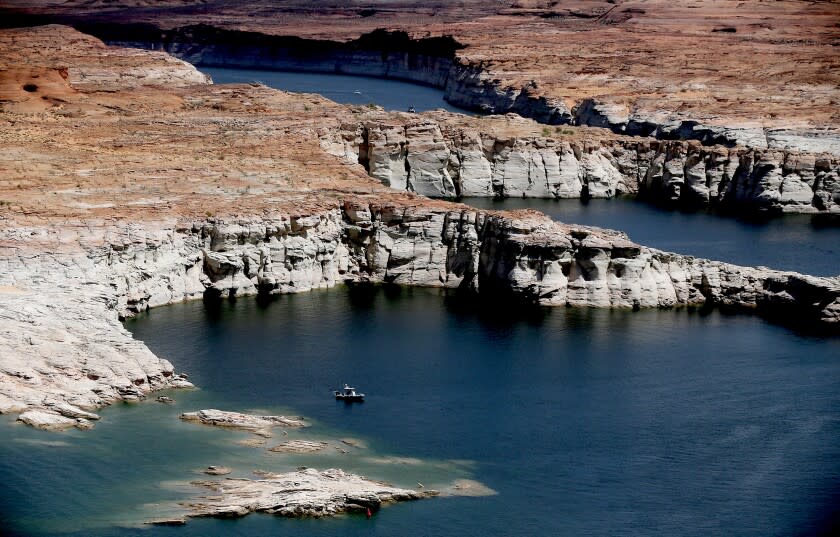Letters to the Editor: We once relied on the L.A. River for water. Let's try doing that again

To the editor: If you go to the Los Angeles Public Library and look up the photo collection on the L.A. River, you will find many photographs of the 52 miles of zanjas, the channels that once crisscrossed Los Angeles in the 1850s to irrigate the vineyards, orange groves and, yes, lawns. ("With severe drought, an urgent call to rework the Colorado River's defining pact," May 19)
The sluice gates were moderated by paid zanjeros who could open them in times of flood and close them in times of drought. In Chinatown, a giant waterwheel transported L.A. River water up to the Zanja Madre and into the Pueblo de Los Angeles.
Though viewers of the photos might exclaim, "Oh, how quaint," we could do well by looking at these practical solutions to help us live within our means once again. We need the L.A. River's water, and we must now find a way to stem the rush of fresh winter rainwater into the salty Pacific Ocean. We had a solution then. Let's do it again.
Or, we could stop building. With people leaving Los Angeles, do we really need to build the additional 250,000 dwellings required by the state? Haven’t we, who have overwhelmed our environment far beyond its natural capacity, done enough?
Sarah Starr, Los Angeles
..
To the editor: The Times describes how a 1922 pact among seven western states over-allocated the water now flowing in the Colorado River. A few possible remedies are mentioned, but not the one that is the most sensible and long lasting.
Lake Powell, a Colorado River reservoir on the Arizona-Utah border, should be entirely drained and its water stored down river in Lake Mead. This would reduce water loss due to both evaporation and seepage.
The reborn Glen Canyon (which currently sits underneath Lake Powell) could then be made into a new national park. Such a park would enjoy far more visitation and use than does the current greatly diminished Glen Canyon National Recreation Area.
Ben Zuckerman, Los Angeles
..
To the editor: It is time to take action against the enormous waste of water, electricity and, if heated, natural gas being consumed by private swimming pools. I should know, because I have one myself. ("Why swimming pools are getting a break despite unprecedented water restrictions," May 21)
Continuous evaporation requires frequent refilling. Electricity is required to run a pump that circulates water and vacuums up dirt and leaves. Chemicals to control algae leave a residue that builds up and eventually requires the entire pool to be drained and refilled.
Years ago I eliminated all of this waste by covering my pool with a sheet of black polyethylene plastic. The black plastic cuts off all sunlight so algae cannot grow, eliminates evaporation and keeps dirt and leaves out. It also draws in the heat to act as a free solar heater.
But pool owners want to see blue water, not dirty black plastic. The time has come to mandate that private pools be covered, at least until the current drought is over.
Larry Pearson, Burbank
This story originally appeared in Los Angeles Times.

